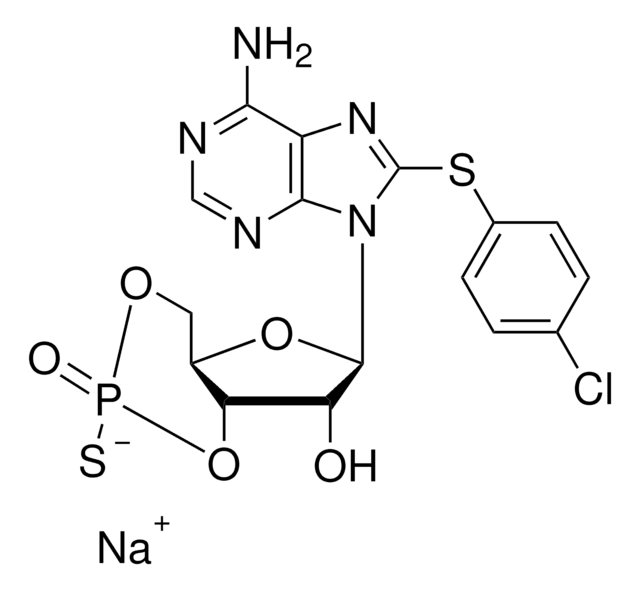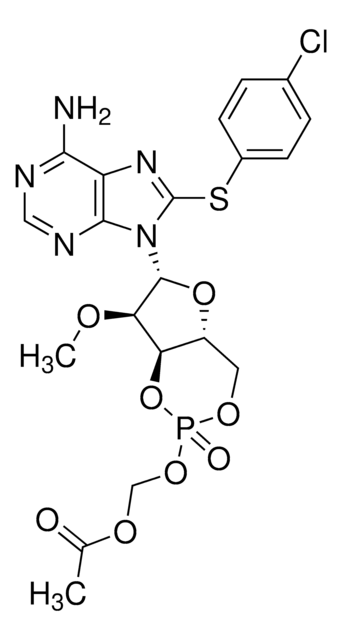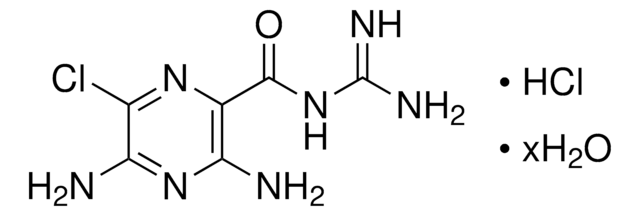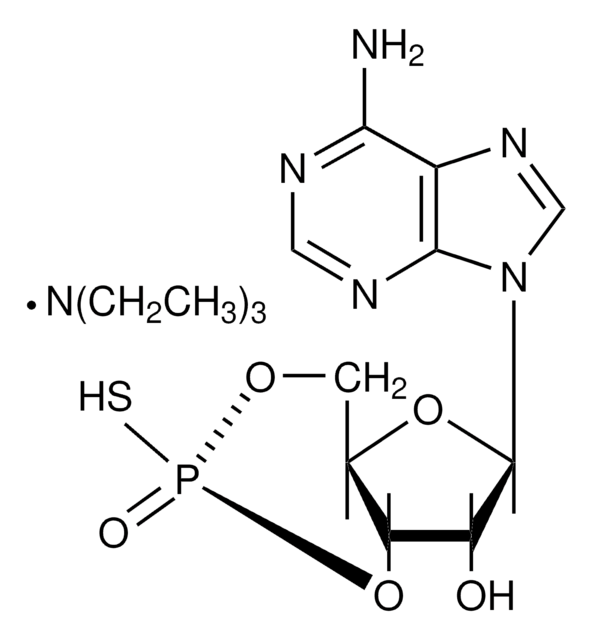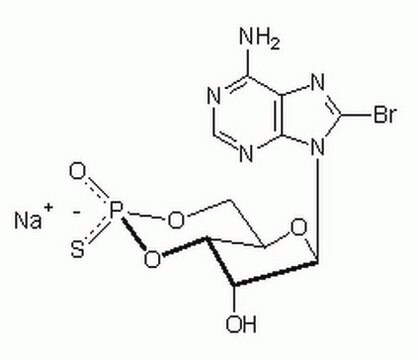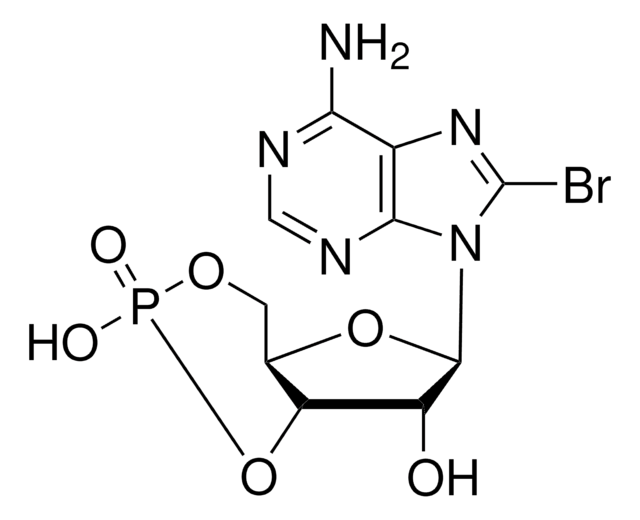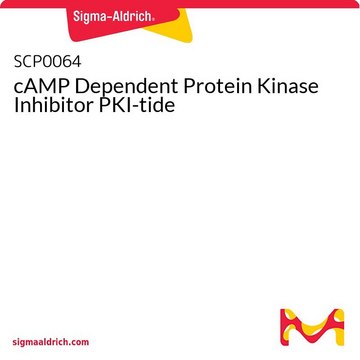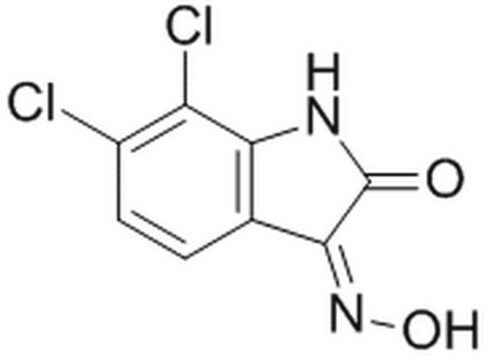A165
Rp-Adenosine 3′,5′-cyclic monophosphorothioate triethylammonium salt
powder, ≥98% (HPLC)
Synonym(s):
Rp-Cyclic 3′,5′-hydrogen phosphorothioate adenosine triethylammonium salt, Rp-cAMPS triethylammonium salt
About This Item
Recommended Products
assay
≥98% (HPLC)
form
powder
storage condition
desiccated
color
white to beige
solubility
H2O: 10 mg/mL
λmax
258 nm
storage temp.
−20°C
SMILES string
CCN(CC)CC.Nc1ncnc2n(cnc12)[C@@H]3O[C@@H]4COP(O)(=S)O[C@H]4[C@H]3O
InChI
1S/C10H12N5O5PS.C6H15N/c11-8-5-9(13-2-12-8)15(3-14-5)10-6(16)7-4(19-10)1-18-21(17,22)20-7;1-4-7(5-2)6-3/h2-4,6-7,10,16H,1H2,(H,17,22)(H2,11,12,13);4-6H2,1-3H3/t4-,6-,7-,10-,21?;/m1./s1
InChI key
OXIPZMKSNMRTIV-NVGWRVNNSA-N
Related Categories
Application
Biochem/physiol Actions
Features and Benefits
Caution
Storage Class
11 - Combustible Solids
wgk_germany
WGK 3
flash_point_f
Not applicable
flash_point_c
Not applicable
ppe
Eyeshields, Gloves, type N95 (US)
Choose from one of the most recent versions:
Already Own This Product?
Find documentation for the products that you have recently purchased in the Document Library.
Customers Also Viewed
Related Content
Cyclic nucleotides, including cyclic AMP (cAMP), cyclic GMP (cGMP) and cyclic ADP-ribose, have been extensively studied as second messengers of intracellular events initiated by activation of GPCRs. cAMP modifies cell function in all eukaryotic cells, principally through the activation of cAMP-dependent protein kinase (PKA), but also through cAMP-gated ion channels and guanine nucleotide exchange factors directly activated by cAMP.
Our team of scientists has experience in all areas of research including Life Science, Material Science, Chemical Synthesis, Chromatography, Analytical and many others.
Contact Technical Service
